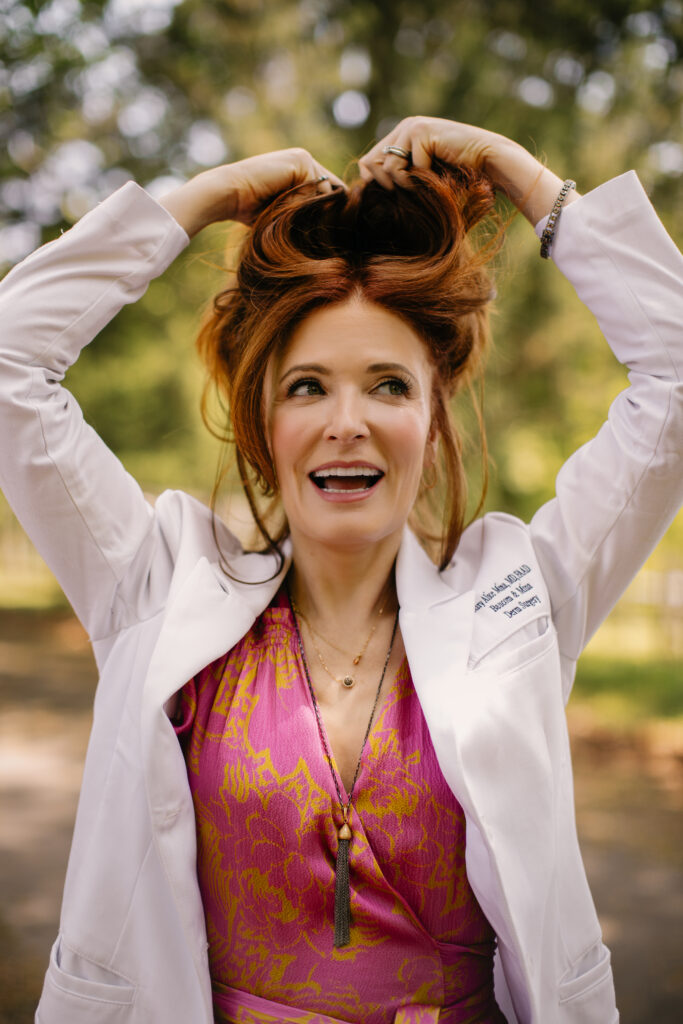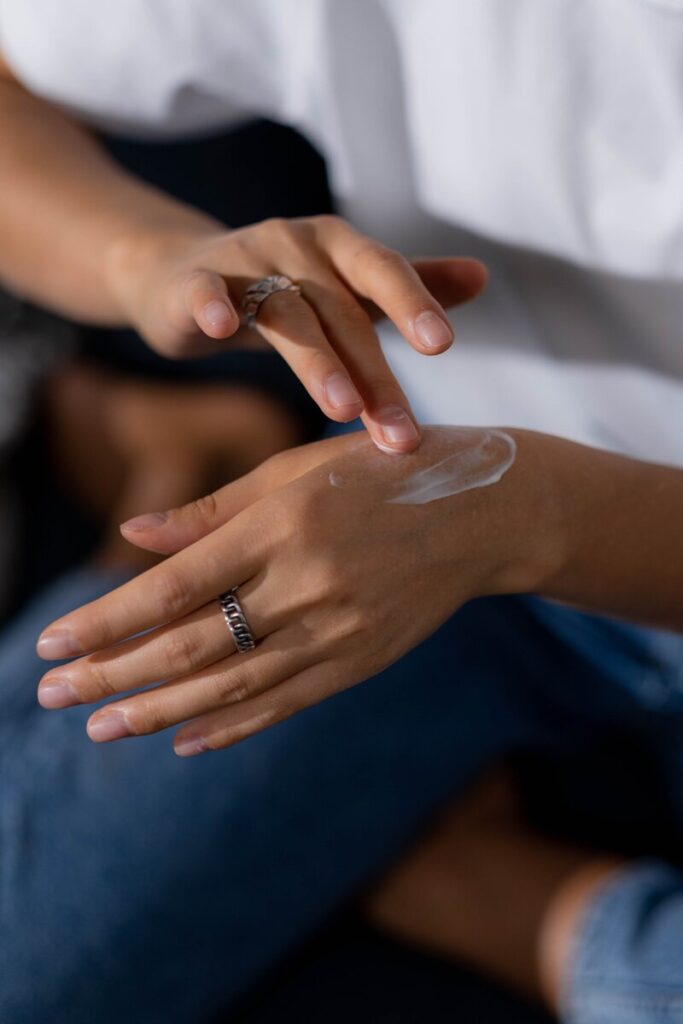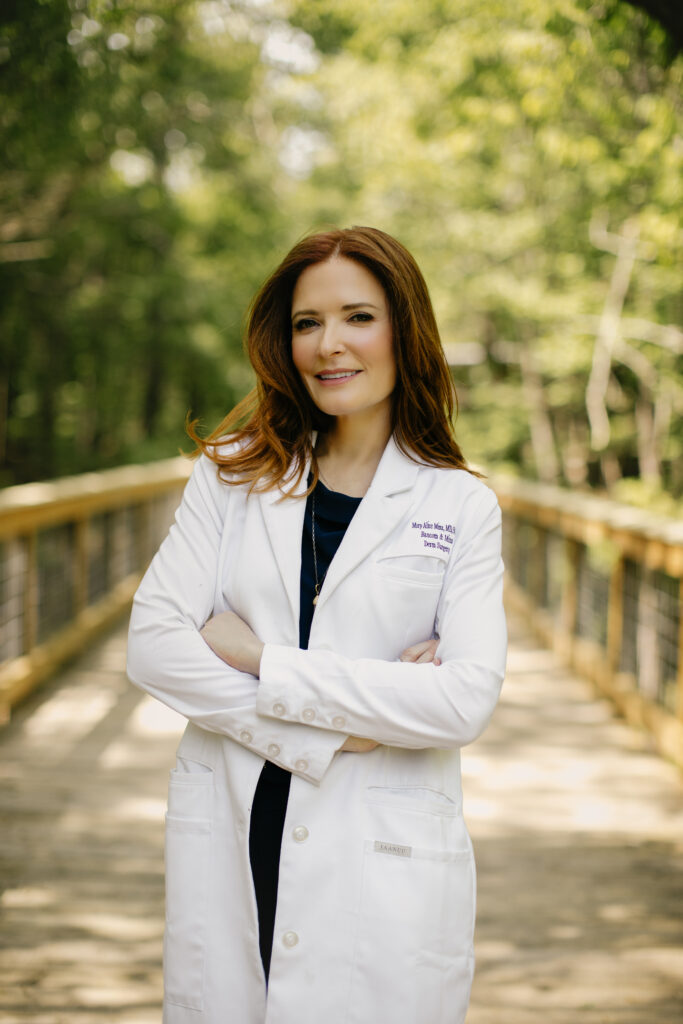Many people have heard about skin cancers and maybe even know someone who’s had one, but do you know much more than that? Could you name a type of skin cancer beyond melanoma? Read on to learn about the most common skin cancers and how we treat and prevent them!
Perhaps no surprise, but skin cancers arise from sun damage caused by ultraviolet (UV) radiation. And the most common type of skin cancer out there is a basal cell carcinoma (BCC). In fact, this is the most common cancer in the world! BCCs tend to be pink, shiny papules that occur on sun exposed skin like the nose, cheeks, ears, scalp, hands and neck. Often times people will have them for months at a time before really noticing them. Signs that you should get it checked out include any pain or bleeding. Fortunately, when caught early, BCCs are easily treated in your dermatologist’s office. While BCCs typically do not ‘metastasize’ or spread to other parts of the body, they can be locally destructive. If the site is on the ear, nasal tip, or near the eye, you can probably image how devastating this can be if the BCC is allowed to grow for months to years at a time. Not every BCC is created equal. BCCs are categorized into subtypes based on their clinical appearance, anatomic location, and how they appear under the microscope. More indolent BCCs tend to be superficial or nodular, while more aggressive BCCs tend to be ‘infiltrative’ or ‘sclerotic.’ The subclassification, and location, of the BCC will play a role in how it is treated.
Squamous cell carcinomas (SCCs) are the second most common skin cancers and their numbers are on the rise. These cancers are also caused by the sun’s UV radiation, although some forms are caused by other things like viruses. SCCs tend to have a more ‘ warty’ appearance and are often tender or painful. Again, they most commonly present on sun exposed skin, but the more virally-mediated lesions can be seen on the digits/hands and genitals. SCCs tend to be immune responsive, more so than BCCs. In patients who are immunosuppressed from a transplant or medications, SCCs can behave more aggressively and at times spread (metastasize) to lymph nodes and beyond. Like with BCC, not all SCCs are created equally. While most patients with SCCs will do well and be ‘cured’ of their cancer, some patients with more aggressive SCCs will need additional work ups and treatment.
The final common skin cancer we’ll cover here is melanoma. People seem to be most familiar with melanoma despite the fact that it is not the most common skin cancer (remember, that’s BCC)! Melanomas most often present as a brown, new spot on the skin. Typically, they do not arise from moles that someone already has, but rather ‘de novo’ which is why a new mole is concerning. The brown spot may have an irregular border, irregular pigmentation (coloring), or it could be larger than a pencil eraser. These are all concerning signs of a melanoma. Just like with BCC and SCC, not all melanomas are created equally. The depth of invasion into the skin of the melanoma (called the Breslow thickness) is what we look at most closely to determine the stage. The stage of the melanoma will also determine how it’s treated. Early or thin melanomas can be treated safely and effectively in your dermatologist’s office. Intermediate or thick melanomas will typically see our surgical oncologist colleagues for removal along with a sentinel lymph node (SLN) biopsy. If the melanoma is found to have spread beyond the lymph nodes, a medical oncologist will often be involved for the use of immunotherapy.
While melanoma has more non-sun related risk factors (red hair, many moles, family history of melanoma) than BCC and SCC, the incidence all three skin cancers can be minimized with vigilant sun protection! This includes wearing sunscreen daily, avoiding sun burns, seeking shade and absolutely NO tanning beds!
If you have a spot on the skin that’s worrisome, be sure to see your dermatologist for an evaluation. As dermatologists, we love to be able to reassure our patients if it is benign, and if it’s not, we are glad that you sought care. Not infrequently, we’ll spot something else that needs attention during that visit, so it’s beneficial to be seen, even if it’s just for reassurance.
If you haven’t tuned into the podcast ‘Common Skin Cancers: what you should know!’ be sure to do so for my interview with dermatologist and skin cancer expert, Dr. Nicole F. Velez from Pittsburgh Skin. In our discussion, we take a deeper dive into these common skin cancers and how we diagnose, treat, and prevent them.










